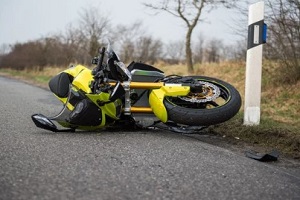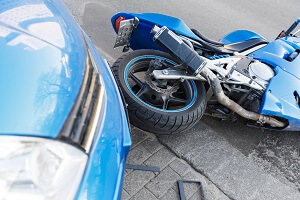 Motor vehicle accidents are an unfortunately common occurrence, but motorcycles are at an even higher risk of catastrophic damage as a result of a collision.
Motor vehicle accidents are an unfortunately common occurrence, but motorcycles are at an even higher risk of catastrophic damage as a result of a collision.
Motorcycles are less visible and lack many of the safety and protection features that come with larger, enclosed vehicles, meaning that bikers are almost 30 times more likely to be killed in a collision than those who are in cars or trucks. As many as 14% of all traffic fatalities occur on motorcycles.
This has raised questions about whether lane splitting behavior is contributing to some of these accidents and whether the practice is even permitted in California. Here is an overview of lane splitting, including whether it plays a role in the number of motorcycle accidents in California.
What Is Lane Splitting?
Lane splitting occurs when a motorcyclist or bicyclist moves forward between two lanes of traffic. For instance, if traffic is stopped on a highway, those waiting in their cars may notice motorcycles overtaking them while riding the line between the stopped lanes, using the gap as a faux-lane of their own.
It can occur when traffic is moving as well, but it is more noticeable during a standstill or at a stop light, when a motorcycle may pull up in between two cars in order to stop.
Is Lane Splitting Ever Legal?
The majority of states have passed laws that make lane splitting an illegal traffic maneuver. However, California is the only state in which no such law has been passed. This means that lane splitting is still permitted in California, though experts recommend certain behaviors in order to increase the chances of a successful split and avoid traffic consequences.
 Lane splitting in California is discouraged near exits on the freeway and ramps leading to or from the freeway. Prohibiting the behavior here helps to prevent motorcycles from being hit by vehicles that are crossing lanes of traffic in order to enter or exit.
Lane splitting in California is discouraged near exits on the freeway and ramps leading to or from the freeway. Prohibiting the behavior here helps to prevent motorcycles from being hit by vehicles that are crossing lanes of traffic in order to enter or exit.
Additionally, lane splitting is not recommended when the flow of traffic is going faster than 30 miles per hour. Motorcycles should not exceed 10 miles per hour more than the current flow of traffic in order to split, and they should stop splitting as soon as they are safely able to do so.
Does Lane Splitting Increase Motorcycle Accidents in California?
The data are complex when evaluating whether lane splitting results in more accidents. On the surface, studies seem to indicate that lane splitting is dangerous. However, this does not mean that lane splitting is inherently dangerous, only that some motorcycle accidents are attributed to it.
Despite popular belief, accidents resulting from lane splitting do not usually happen because the motorcycle is hit by another car; rather, they happen because the biker rear-ends another vehicle. A study conducted by UC Berkeley discovered that it is a biker’s behavior during lane splitting that impacts how dangerous the maneuver is.
For those going the same speed as the rest of traffic, no increase in risk was noted. However, risk began to rise sharply as soon as the motorcyclists began going more than 10 miles per hour faster than the traffic around them.
 More than 20% of bikers say that when they lane split, they are going at least 15 miles per hour faster than the surrounding traffic. Only 32% of bikers will only choose to lane split when all other traffic has come to a standstill. The rest attempt to lane split at any time, with more than 30% willing to lane split even when conditions are stop and go or otherwise unpredictable.
More than 20% of bikers say that when they lane split, they are going at least 15 miles per hour faster than the surrounding traffic. Only 32% of bikers will only choose to lane split when all other traffic has come to a standstill. The rest attempt to lane split at any time, with more than 30% willing to lane split even when conditions are stop and go or otherwise unpredictable.
Thus, lane splitting itself does not increase motorcycle accidents in California when done correctly. However, the majority of bikers in California do not follow the proper precautions and expert guidance on how to safely practice lane splitting, resulting in the nearly 20% of motorcycle accidents that are attributed to the behavior.
When Lane Splitting Goes Wrong, Get Legal Help
Lane splitting plays a significant role in increasing certain types of car and motorcycle accidents. This can leave all involved parties with some confusion about how to handle the resulting car accident and determine who is at fault—especially because California does not prohibit lane splitting.
This is why it is wise to seek guidance from a motorcycle accident lawyer in California after a motorcycle accident has occurred, whether due to lane splitting, low visibility or other reasons.
The professionals at Lehr Law will leverage our experience in problem-solving, human psychology and more to get to the root of the issue to get the best outcome for your motorcycle accident case. Contact us to schedule a consultation.
